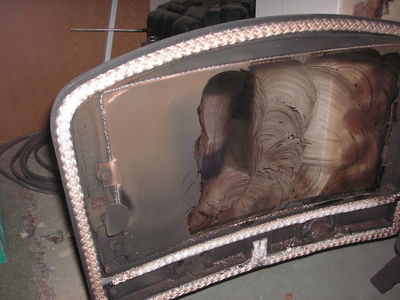Difference between revisions of "Glycerine logs"
Julesandtash (talk | contribs) |
(→Absorbent) |
||
| Line 14: | Line 14: | ||
There are several absorbent materials which can be, and have been, used to make logs. Shredded paper and sawdust are probably the two most commonly used examples. | There are several absorbent materials which can be, and have been, used to make logs. Shredded paper and sawdust are probably the two most commonly used examples. | ||
| − | When using sawdust, finer is definitely better. The dust produced from furniture workshops and those places which cut boards | + | When using sawdust, finer is definitely better. The dust produced from furniture workshops and those places which cut boards yo size is considerably more absorbent and will hold far more Glycerine per log than chainsaw chippings or wood shavings. |
Whatever absorbent is used, it is important that the material is dry. If it is wet then that water will be trapped in the logs causing the same combustion problems as a water prewash. | Whatever absorbent is used, it is important that the material is dry. If it is wet then that water will be trapped in the logs causing the same combustion problems as a water prewash. | ||
Revision as of 12:28, 5 November 2012
Glycerine logs, 'Glyc logs' or 'Glogs' are fuel logs made of biodiesel waste and a suitable flammable absorbent material which can be burnt on a solid fuel appliance to produce heat.
Contents
Mixing the products
Glycerol
The product which biodiesel manufacturers refer to as 'Glycerine' or 'Glyc' is actually a mixture of Glycerol, Methanol, mono-, di- and tri- glycerides, Catalyst from the reaction, Water and other impurities. Depending on the catalyst used and the processing method, the Glycerol may stay liquid for a long time or may set solid within hours of draining from the proce Virtually all biodiesel recipes and processes will produce Glycerol that can be used for logs. The only method known to cause issues is the use of a 7% water 'prewash' before the Glycerol is drained. This excess water content in the Glycerol tends to reduce their flammability considerably. Clearly, the Glycerine needs to be liquid in order to mix thoroughly with, and be absorbed by, the absorbent.
Absorbent
There are several absorbent materials which can be, and have been, used to make logs. Shredded paper and sawdust are probably the two most commonly used examples.
When using sawdust, finer is definitely better. The dust produced from furniture workshops and those places which cut boards yo size is considerably more absorbent and will hold far more Glycerine per log than chainsaw chippings or wood shavings. Whatever absorbent is used, it is important that the material is dry. If it is wet then that water will be trapped in the logs causing the same combustion problems as a water prewash.
Mixing
There are plenty of options for mixing the two products ranging from a bucket and stick through to concrete mixers. Whatever method is used, it should be remembered that the 'Glycerine' from biodiesel processing contains a number of potentially harmful chemicals and should not really be handled without gloves. If the Glycerine has not had the Methanol removed, there is the added risk of Methanol vapour being given off, therefore mixing should be carried out in a well ventilated space (ideally outside).
It is important that the Glycerine and absorbent are mixed thoroughly and left long enough for the Glycerine to soak in.
Once mixed the mixture needs to be compacted into some form of container. Even if made from previously completely solid Glycerine, the mixture will not set completely solid again. This means that excess can be stored in sealed containers if not all used at the time of mixing.
Moulding the logs
Flammable containers that are burned with the log
This is the simplest wasy to make logs. Anything of a suitable size for the intended appliance and made of a flammable material is useable. This makes old carboard containers (catfood pouch boxes, parts boxes etc). tetra packs cut open at one end and Pringles tubes ideal.
One of the bets options though is the large diameter cardboard tubes found inside rolls of carpet and other floor coverings. These are generally thick walled and allow the mixture to be firmly compacted inside them.
Non-flammable moulds
If a fine absorbent material (such as fine sawdust) and a previously solid sawdust is used then it is possible to compact the mixture into a mould and then remove the log which will still hold together. 110mm plastic drain pipe makes a suitable mould for this purpose.
Compacting the mixture
The mixture needs to be compacted into the containers in order for it to stay together when burning and also to hold it's form during storage. Clearly this is vital if the intention is to mould the logs then remove them from the mould. Ramming the mixture into the boxes with a suitable piece of wood and hand pressure is sufficient although it may well be possible to adapt a log splitter or similar machine to do this on an automated, or semi- automated process.
Burning the logs
Glycerine logs are burn very well and produce a large amount of heat.
Storing the logs


